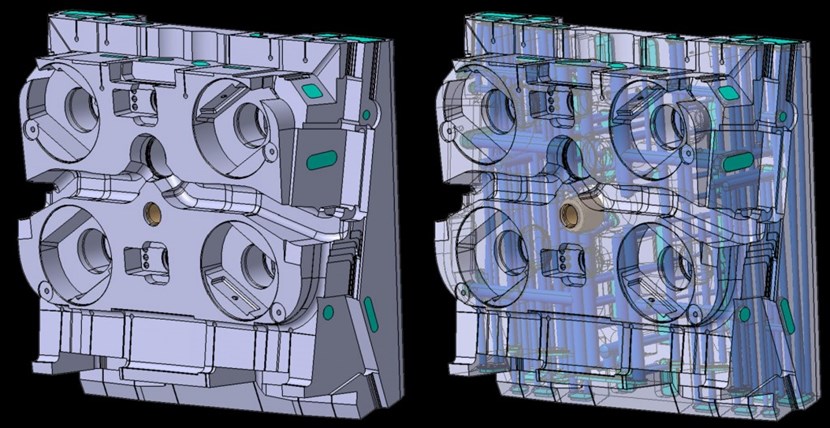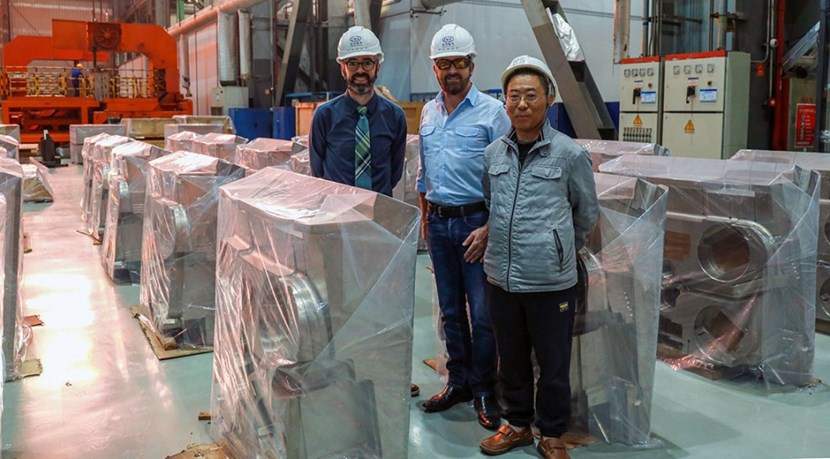
The transparency in the image on the right shows that a shield block is as complex in its internal cooling channels as in its outer geometry. Once paired with a first-wall panel, the blanket shield blocks play a dual role: protecting the machine's steel structure and superconducting toroidal field magnets from neutron flux and transferring heat to the cooling system via cooling channels.
Inside the ITER machine, 440 shield blocks pair with 440 first-wall panels to form the

After four years of virtual exchanges, the December 2023 shield block progress meeting at Dongfang Heavy Machinery was held in-person. From left to right at the factory in China are Ryan Hunt, Leader of the ITER Blanket Project; Frédéric Escourbiac, Deputy Head of ITER's Nuclear Technology Program; and Fu Zhang, ITER Technical Responsible Officer for blanket shield block procurement.
Last December in Guangzhou, China, a progress meeting was held at Dongfang Heavy Machinery, the main supplier for the Chinese shield block procurement. The work session—the 81st since 2013—brought together Fu Zhang, Frédéric Escourbiac (Deputy Head of ITER's Nuclear Technology Program), Ryan Hunt (Leader of the ITER Blanket Project) and representatives from the Chinese Domestic Agency and the Southwestern Institute of Physics (SWIP), which provides technical support. It was the first in-person progress meeting since pandemic-imposed restrictions in international travel.







